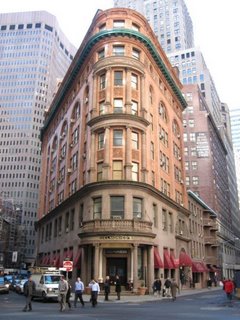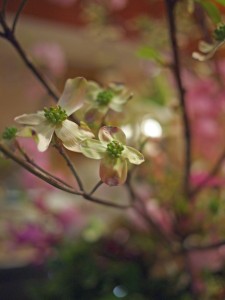
The Kitano, a few blocks south of Grand Central Station, is one of my favourite places to stay in New York. The hotel is Japanese owned and run, and stepping off the Park Avenue sidewalk into the lobby is a bit like stepping through a teleporter, straight into an Asian hotel. There’s Japanese floral art, a service ethic imported straight from Tokyo, a green tea machine in every bedroom – and it’s wonderfully, extravagantly clean. Best of all, there’s a simply superb Japanese restaurant in the basement; one of those inexplicable well-kept secrets, which you won’t read much about in guide books or online. I am assured by a Japanese friend that given the decor, kimono-swathed waitresses, and lacquered tableware, it is very easy to mistake Hakubai for somewhere similarly swanky in Kyoto before you even get to the food.
I was there for the food rather than the hallucinatory experience of being in another city, but I have to admit: going from a view of the Empire State and Chrysler buildings to a restaurant that feels half a world away is a great sensation.
Hakubai was on my list of must-eats in New York because it is one of the very, very few restaurants in the city that offers a kaiseki menu. Kaiseki is a bravura food-as-art performance of a meal. This isn’t hyperbole; a kaiseki meal really is regarded as art, and like other kinds of art, it has a formal structure. You’ll find many exquisitely prepared tiny courses, which are carefully chosen to reflect the season. Looks and taste are equally important here, and there should be a very wide variation in textures between the courses. Modern kaiseki usually proceeds with an appetiser, sashimi, a simmered dish, a grilled dish, and a steamed course (not necessarily in that order), perhaps with additions from the chef. The courses are served at carefully timed intervals on decorative lacquer and porcelain dishes, decorated with real leaves, flowers, and tiny pieces of edible garnish. This sort of thing doesn’t come cheap, of course; Hakubai offers two kaiseki menus, one at $170 a head, and an oknomi kaiseki (what-you-like kaiseki, which is what I ended up ordering) at $95.
Because a kaiseki meal is meant to appeal as much to the eyes as it does to the mouth, the best way to take you through what I ate is through pictures. This is a meal worth saving up for if you happen to be visiting the city. We had the excuse of a couple of celebrations – a birthday, the end of a university course – but if I were you, I’d do my very best to make up some reason to celebrate, sell the car, and use the money to hotfoot it to Hakubai.
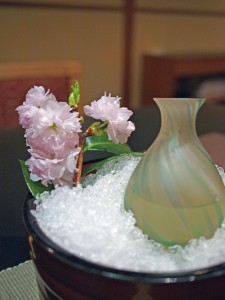
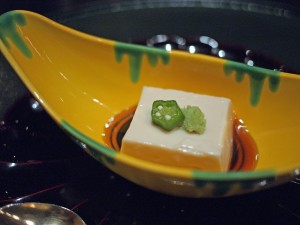
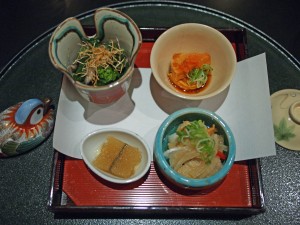
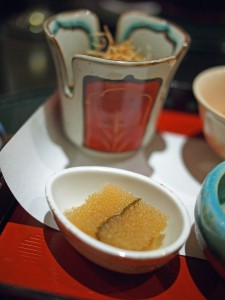
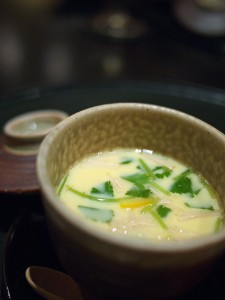
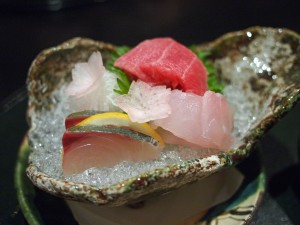
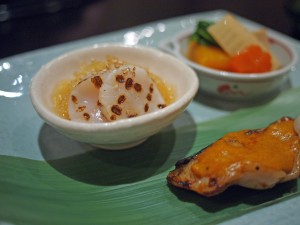
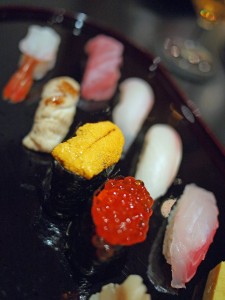
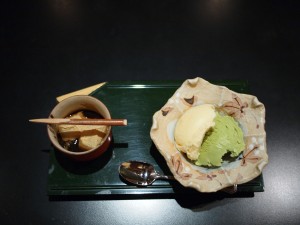
.

